Home » Posts tagged 'Salt tectonics'
Tag Archives: Salt tectonics
The Agost Basin (Betic Cordillera, Alicante province, Spain): a pull-apart basin involving salt tectonics
A new work to illustrate a strike-slip basin in the Betics. Here the link to the publisher.
The Agost Basin is characterized by a Miocene-Quaternary shallow marine and continental infilling controlled by the evolution of several curvilinear faults involving salt tectonics derived from Triassic rocks. From the Serravallian on, the area experienced a horizontal maximum compression with a rotation of the maximum stress axis from E-W to N-S.
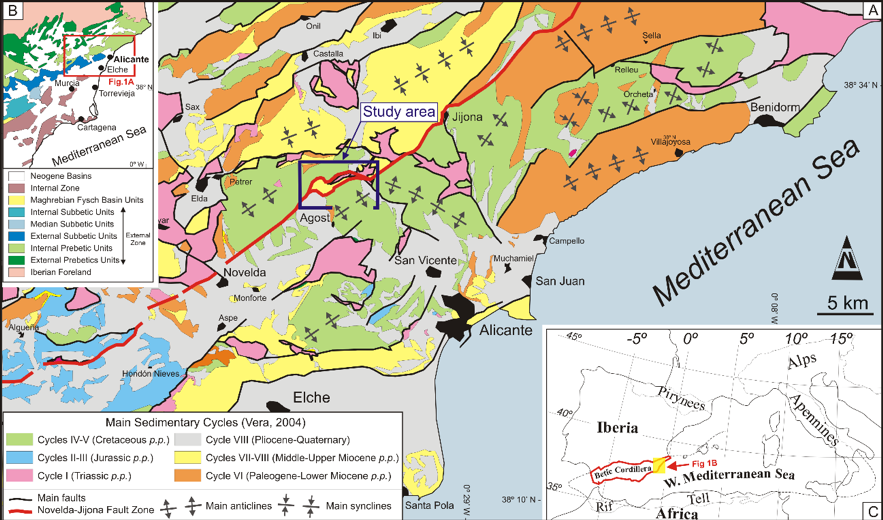
Geological setting
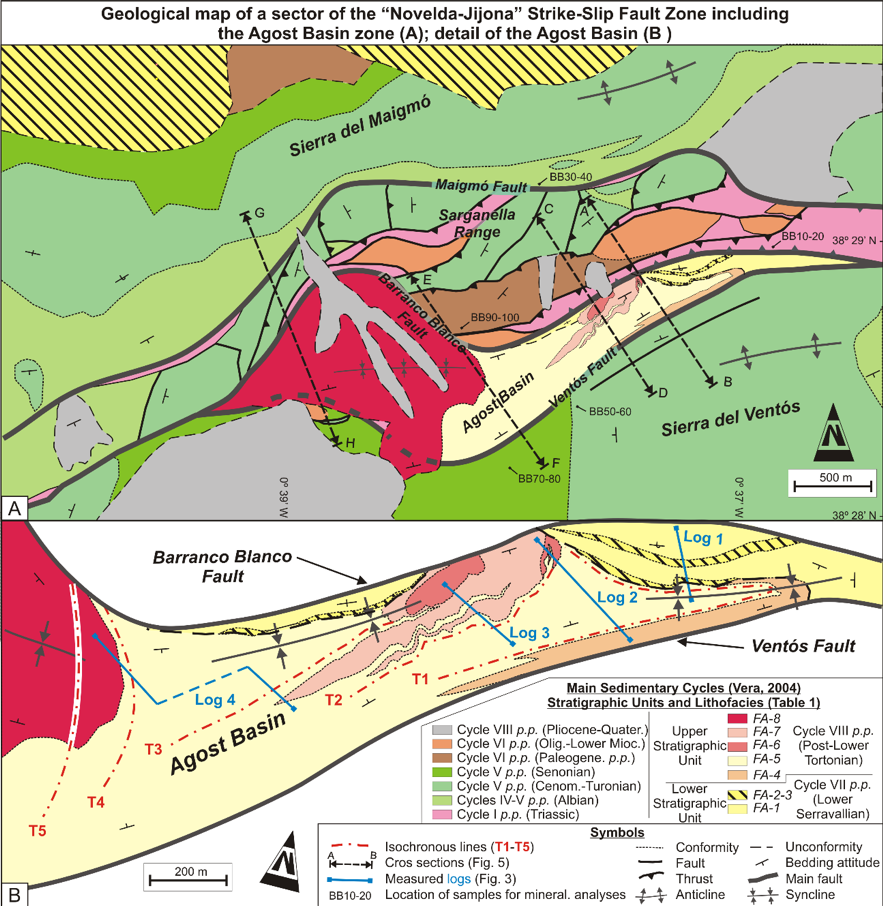
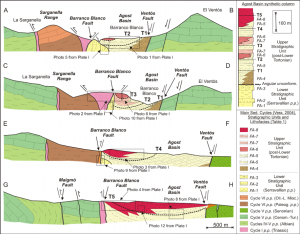
The resulting deformation gave rise to a strike-slip fault whose evolution is characterized progressively by three stages (see Figure 4): (i) stepover/releasing bend with a dextral motion of blocks; (ii) very close to pure horizontal compression; and (iii) restraining bend with a sinistral movement of blocks.
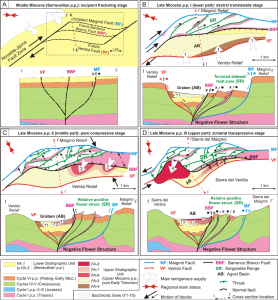
In particular, after an incipient fracturing stage, faults generated a pull-apart basin with terraced sidewall fault and graben subzones developed in the context of a dextral stepover during the lower part of late Miocene p.p. The occurrence of Triassic shales and evaporites played a fundamental role in the tectonic evolution of the study area. The salty material flowed along faults during this stage generating salt walls in root zones and salt push-up structures at the surface. During the purely compressive stage (middle part of late Miocene p.p.) the salt walls were squeezed to form extrusive mushroom-like structures. The large amount of clayish and salty material that surfaced was rapidly eroded and deposited into the basin, generating prograding fan clinoforms. The occurrence of shales and evaporites (both in the margins of the basin and in the proper infilling) favored folding of basin deposits, faulting, and the formation of rising blocks. Later, in the last stage (upper part of late Miocene p.p.), the area was affected by sinistralrestraining conditions and faults must have bent to their current shape. The progressive folding of the basin and deformation of margins changed the supply points and finally caused the end of deposition and the beginning of the current erosive systems. On the basis of the interdisciplinary results, the Agost Basin can be considered a key case of the interference between salt tectonics and the evolution of strike-slip fault zones. The reconstructed model has been compared with several scaled sandbox analogical models and with some natural pull-apart basins.
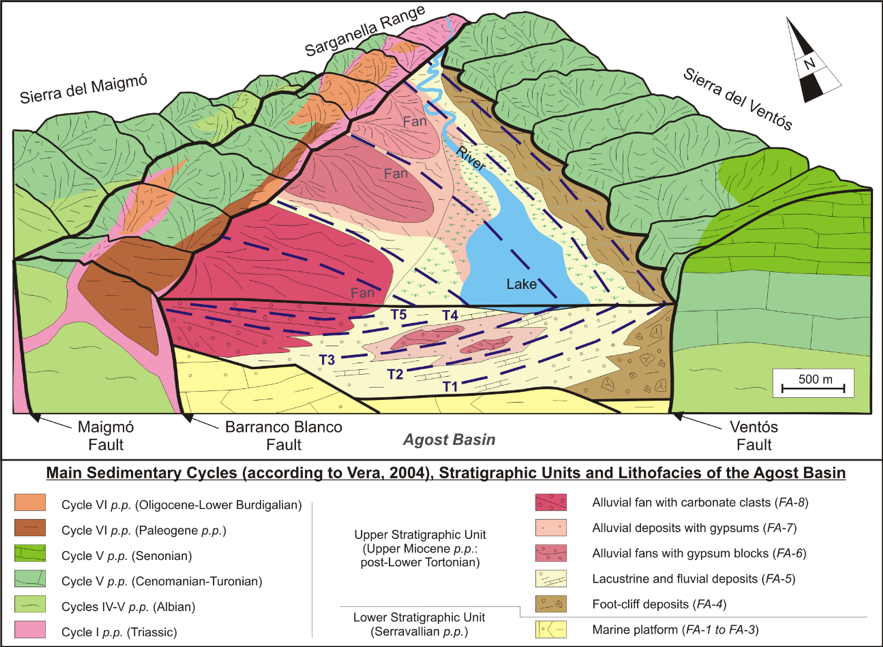
Research supported by: Research Project CGL2016-75679-P, Spanish Ministry of Education and Science; Research Groups and Projects of the Generalitat Valenciana, Alicante University (CTMA-IGA); Research Group RNM 146, Junta de Andalucía; Grants from University of Urbino “Carlo Bo”, responsible M. Tramontana.
Recent Comments